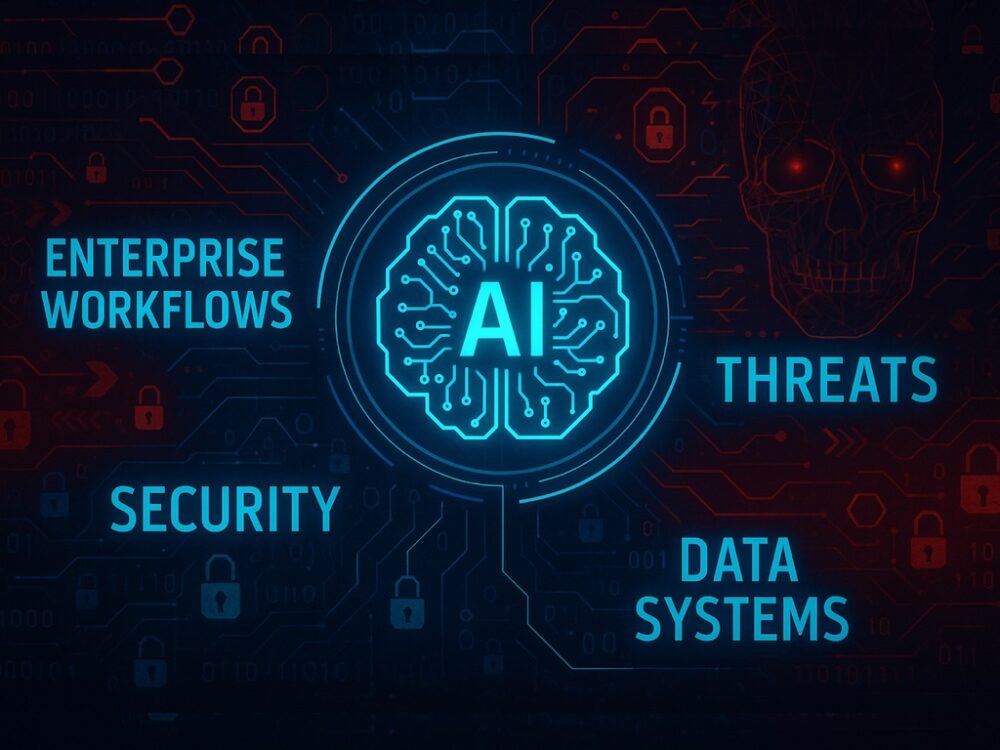The evolution of artificial intelligence (AI) has led to groundbreaking advances in many fields, from healthcare to transportation, and even in the realm of cybersecurity. However, the same technology that enables progress also opens the door to new vulnerabilities. Among the most insidious threats AI poses today is its ability to enhance social engineering attacks—exploiting human psychology and trust to manipulate individuals, organizations, and even governments.
Social engineering traditionally relied on human traits such as trust, urgency, and fear to deceive people into divulging sensitive information. With AI’s rise, the sophistication of these tactics has grown exponentially. AI-driven social engineering combines advanced machine learning, natural language processing, and vast data analytics to exploit cognitive biases, manipulate emotions, and create personalized attacks that are difficult to detect. This article explores the evolution of AI-driven social engineering, how it manipulates human perceptions, and how both individuals and institutions can defend against these threats.
How AI Overcomes Human Perceptions
Humans are naturally susceptible to social engineering because of our cognitive biases and emotional triggers. We tend to trust information that aligns with our existing beliefs or comes from familiar sources. AI leverages this tendency, but with the added power of automation, speed, and personalization.
- Advanced Data Analysis: AI systems can process and analyze vast amounts of data from social media, public records, and other online sources. This enables attackers to create highly personalized phishing attempts, tailored to exploit specific vulnerabilities. The attacker may know an individual’s hobbies, work relationships, and even recent emotional states, all of which can be used to craft a message that feels credible and urgent.
- Natural Language Generation (NLG): AI models like GPT (the engine behind ChatGPT) can generate highly convincing text that mimics human communication. By automating text generation, AI-driven attackers can send out massive volumes of convincing, personalized messages at scale, drastically increasing the likelihood of success.
- Deepfake Technology: AI has also enabled the rise of deepfakes—manipulated videos or audio clips that appear to be real. These can be used for impersonating executives in organizations or even heads of state. The result is highly believable content that can be leveraged for fraud, misinformation, or psychological manipulation.
- Behavioral Analysis: Machine learning algorithms can track patterns of behavior over time, creating models of individual actions, decisions, and habits. By understanding how a person behaves online, attackers can predict how they will respond to certain messages or requests, further increasing the success rate of social engineering attacks.
Exploiting Common Ignorance About Technology and AI
A significant vulnerability in AI-driven social engineering is the general public’s lack of understanding of how AI works and the threats it poses. Most people are not aware of the sophistication of modern AI technologies and their potential to manipulate human behavior.
- Lack of AI Literacy: Many individuals are unaware of the capabilities of AI, including its ability to conduct detailed analysis of their personal lives. This ignorance makes them more likely to trust AI-generated messages or interactions without question.
- False Sense of Security: People often assume that technology is infallible or that AI systems, like chatbots, are safe because they appear to be “automated” and “non-human.” This belief can lead to a lack of skepticism and increased susceptibility to attack.
- Over-reliance on Trust: A common misconception is that AI tools are inherently trustworthy. If an attacker uses AI to craft a seemingly legitimate message or impersonate a trusted figure, victims may not question the source, assuming it’s legitimate because it’s powered by advanced technology.
What’s at Stake?
The implications of AI-driven social engineering are vast, with consequences extending beyond the individual level to businesses and governments.
- Identity Theft: Personal data extracted through social engineering can be used for identity theft, leading to financial loss and reputational damage.
- Corporate Espionage: Social engineering attacks against employees can lead to the theft of intellectual property, trade secrets, or sensitive client information.
- National Security Threats: Governments can become targets of AI-driven misinformation or impersonation campaigns, leading to disruptions in political processes, election integrity, and national security.
- Public Trust: As these attacks become more sophisticated, they have the potential to erode public trust in institutions, including corporations, governments, and technology platforms.
Methodologies Used in AI-Driven Social Engineering Attacks
Social engineering, when enhanced by AI, uses several sophisticated techniques to manipulate victims:
- Phishing and Spear-Phishing: AI can personalize phishing attempts, tailoring messages to individuals’ behavior, language, and preferences. It can even adjust its tone and urgency based on real-time responses from the victim.
- Vishing (Voice Phishing): AI-powered voice synthesis can mimic a person’s voice with remarkable accuracy. Attackers can use AI to simulate phone calls from executives or bank representatives, manipulating victims into revealing personal or financial information.
- Smishing (SMS Phishing): With AI, smishing attacks can be automated and highly targeted, using data-driven insights to craft convincing messages. The use of fake URLs and convincing social engineering messages can trick individuals into downloading malware or providing sensitive information.
- Deepfake Impersonation: Deepfake technology, powered by AI, is increasingly being used to impersonate voices or images of people in positions of authority. These deepfakes can manipulate people into transferring funds, leaking confidential information, or performing actions they otherwise wouldn’t.
- Psychological Manipulation: AI can be used to deploy sophisticated emotional manipulation tactics. By analyzing a person’s online interactions, AI can identify emotional triggers—such as fear, excitement, or guilt—and exploit them to induce compliance with malicious requests.
- Cognitive Bias Weaponization: Cognitive biases, such as confirmation bias (believing information that confirms pre-existing beliefs) and scarcity bias (the fear of missing out), can be weaponized by AI. Attackers can craft messages designed to exploit these biases, making the victim more likely to comply with fraudulent requests.
- Automated Communications: AI can enable automated, large-scale social engineering campaigns through bots, which can interact with users in real-time via email, social media, and even phone calls. These bots can hold convincing conversations and gather personal data without raising suspicion.
Impact on Corporations and Governments
Corporations and governments are high-value targets for AI-driven social engineering attacks. The scale and sophistication of these attacks can have devastating consequences.
- Corporate Impact: Phishing and social engineering attacks on employees can result in data breaches, financial losses, or reputational damage. AI makes it easier for attackers to impersonate senior leaders, bypassing security measures like two-factor authentication and compromising sensitive corporate systems.
- Government Impact: AI-driven social engineering can undermine trust in government institutions by creating deepfake videos or disseminating disinformation. It can also be used in targeted attacks on public figures or officials, leading to political manipulation or public unrest.
Preparations and Defense Strategies
For Regular People
- AI Literacy and Awareness: Understanding the basics of AI can help individuals recognize when they are being targeted by sophisticated social engineering. Regular people should learn about common phishing tactics and familiarize themselves with the signs of a scam.
- Multi-Factor Authentication (MFA): Enabling MFA on personal accounts is one of the most effective defenses against social engineering. Even if an attacker gains access to personal information, MFA provides an additional layer of security.
- Skepticism and Verification: Always verify unexpected messages, especially those asking for sensitive information or urgent action. Call the person or organization directly using known contact information.
For Corporates
- Employee Training: Regular training on recognizing phishing and social engineering tactics is essential. Employees should be encouraged to question unusual requests, especially those that bypass normal protocols.
- AI-Driven Threat Detection: Corporations can deploy AI-powered security systems to detect suspicious activity, such as unusual email patterns or attempts to impersonate senior executives (CEO fraud).
- Zero-Trust Architecture: The zero-trust model assumes that no one, inside or outside the network, should be trusted by default. Corporations should implement strict identity and access controls, continuous monitoring, and authentication protocols.
- Incident Response Plan: Having a clear, tested incident response plan for social engineering attacks is critical. Employees should know how to report suspicious activity quickly, and IT teams should be prepared to respond immediately.
For Governments
- Public Education Campaigns: Governments should educate citizens about AI-driven social engineering threats, emphasizing critical thinking and skepticism in the face of unsolicited communications.
- Advanced Threat Intelligence: Governments can employ AI-based security systems to analyze large datasets for signs of social engineering attacks or misinformation campaigns.
- Legislative Oversight: Governments need to implement and enforce laws that regulate the use of AI and deepfake technologies, holding malicious actors accountable.
- Collaborative Defense: Governments should work with the private sector, international allies, and cybersecurity firms to share threat intelligence and create a united front against AI-driven social engineering.
The evolution of AI has drastically changed the landscape of social engineering. With the ability to personalize, automate, and scale attacks, AI makes it easier for malicious actors to exploit human vulnerabilities and bypass traditional security defenses. However, with awareness, education, and strategic defenses, individuals, corporations, and governments can mitigate the risks posed by AI-driven social engineering and defend against these sophisticated threats.
As AI technology continues to evolve, so too will the tactics of attackers. The key to staying ahead lies in embracing proactive defense mechanisms—such as zero-trust architectures, continuous monitoring, and user education—that can neutralize these emerging threats.



